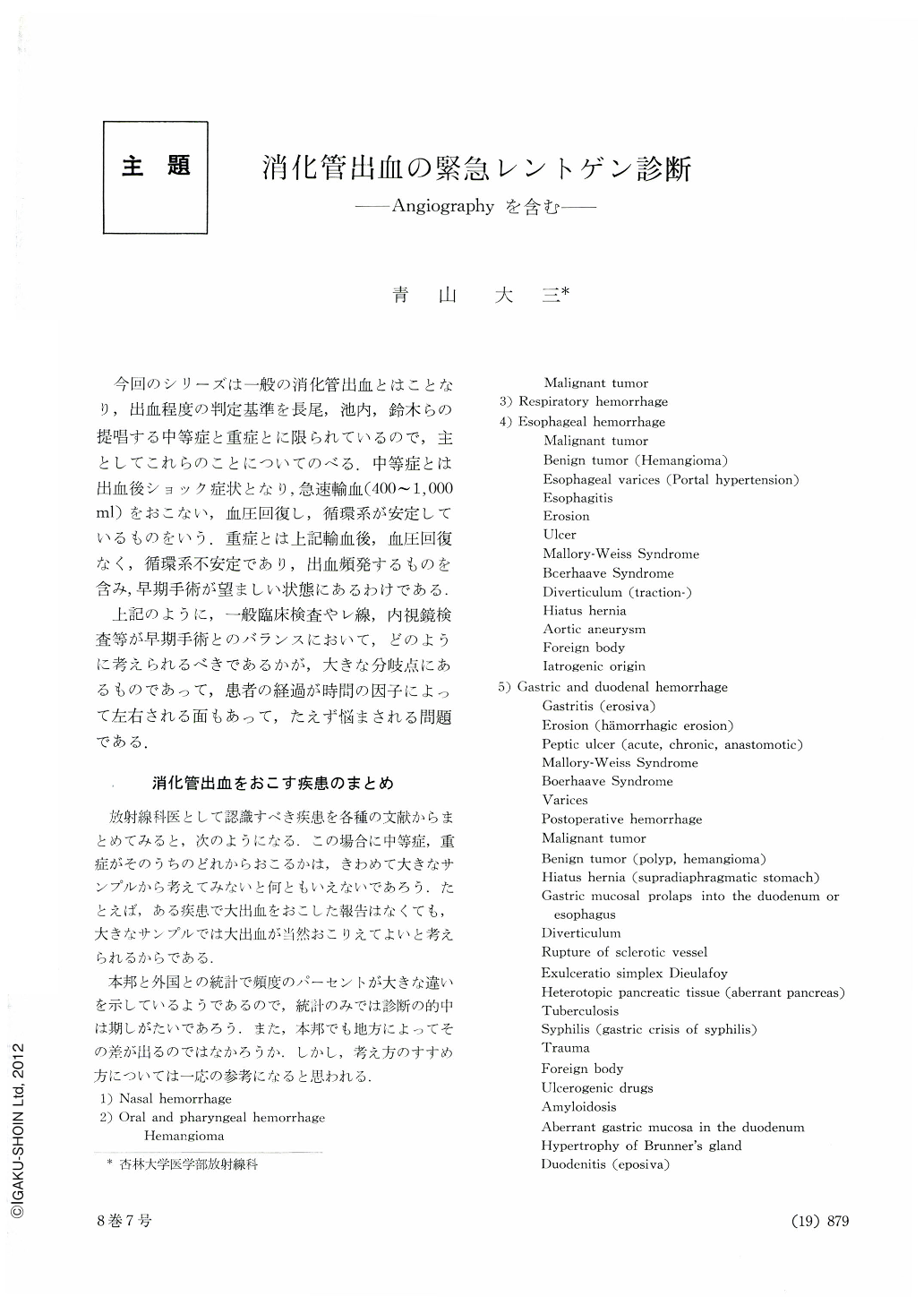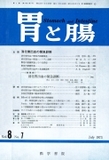Japanese
English
- 有料閲覧
- Abstract 文献概要
- 1ページ目 Look Inside
今回のシリーズは一般の消化管出血とはことなり,出血程度の判定基準を長尾,池内,鈴木らの提唱する中等症と重症とに限られているので,主としてこれらのことについてのべる.中等症とは出血後ショック症状となり,急速輸血(400~1,000ml)をおこない,血圧回復し,循環系が安定しているものをいう.重症とは上記輸血後,血圧回復なく,循環系不安定であり,出血頻発するものを含み,早期手術が望ましい状態にあるわけである.
上記のように,一般臨床検査やレ線,内視鏡検査等が早期手術とのバランスにおいて,どのように考えられるべきであるかが,大きな分岐点にあるものであって,患者の経過が時間の因子によって左右される面もあって,たえず悩まされる問題である.
The site of bleeding from the digestive tract is divided into its upper and lower part. The severity of hemorrhage is also separated into minor, moderate and massive degree. The theme in this paper concerns only the latter two.
Slight difference is seen between Japan and western countries in the division of diseases responsible for active bleeding from the gastrointestinal tract, but exact percentage of their incidence in this country is not to be obtained.
Active bleeding for which roentgenologic examination is indicated is at most confined to cases of moderate extent of bleeding. It is out of the question for massive hemorrhage, which requires immediate surgical intervention, leaving fundamentally no room for roentgenologio exploration in view of mostly a critical condition of the patient. Endoscopy should be best performed in the operation room.
Patients with moderate bleeding are usually examined with x-ray by using gastrografin, a contrast medium not of barium variety. Subsequent endoscopy must also be ready at hand.
Reports of intestinal diseases hard to diagnose otherwise than by angiography are often encountered in the recent literature. However, as their incidence is as yet inaccurate, much progress in this field is eagerly awaited for. Reportedly, angiography is only infrequently performed in Japan in cases of massive hemorrhage into the gastrointestinal tract.
In moderate bleeding, its actual site must be looked for by x-ray not only in the upper gastrointestinal tract but in the lower one as well. When both x-ray and endoscopy fail to locate the site of bleeding, angiography is then in order. Roentgenologic examination is requisite for active bleeding from the lower digestive tract, but it brings up another problem for exact diagnosis in the double contrast study: the ability of the examiner to read the films accurately.
Active bleeding from the gastrointestinal tract calls for co-employment of x-ray and endoscopy in identifying its site or in its accurate diagnosis. At times, regard for the life of the patient could result in the priority of surgical intervention to preliminary examinations such as x-ray or endoscopy when they are not readily available.

Copyright © 1973, Igaku-Shoin Ltd. All rights reserved.


